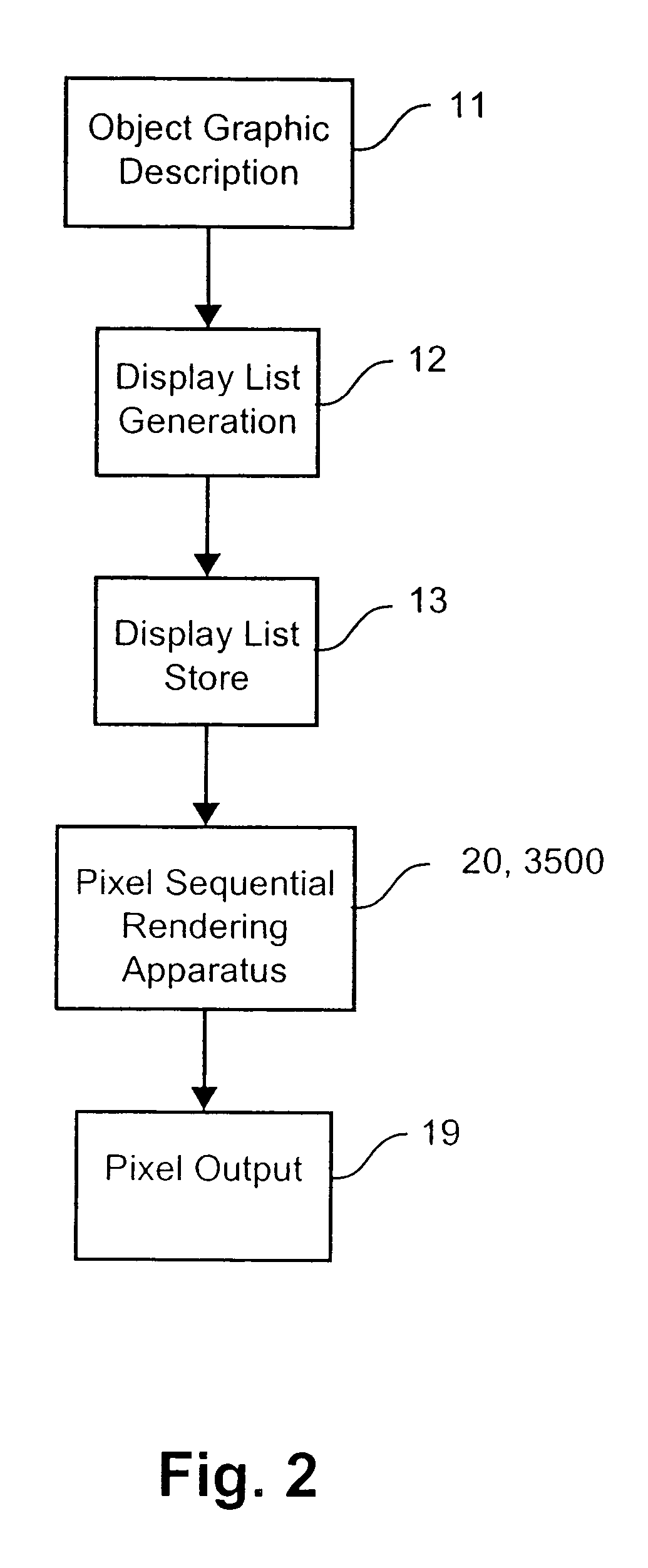Tree-based compositing system
a compositing system and tree technology, applied in the direction of electric controllers, instruments, ignition automatic control, etc., can solve the problems of high ram requirements, high cost, difficult to run at high speed,
- Summary
- Abstract
- Description
- Claims
- Application Information
AI Technical Summary
Benefits of technology
Problems solved by technology
Method used
Image
Examples
Embodiment Construction
[0148] Where reference is made in any one or more of the accompanying drawings to steps and / or features, which have the same reference numerals, those steps and / or features have for the purposes of this description the same function(s) or operation(s), unless the contrary intention appears.
[0149] For a better understanding of a pixel sequential rendering system 1, a brief overview of the system 1 is first undertaken in Section 1.0. Then follows a brief discussion in Section 2.0 of the driver software for interfacing between a third party software application and the pixel sequential rendering apparatus 20, 3500 of the system 1. An overview of a prior art pixel sequential rendering apparatus 20 is then discussed in Section 3.0. The salient features of the present disclosure including a pixel sequential rendering apparatus 3500 are described in Section 4.0 and build upon the arrangements described in Sections 1.0, 2.0 and 3.0. As will become apparent, the pixel sequential rendering a...
PUM
 Login to View More
Login to View More Abstract
Description
Claims
Application Information
 Login to View More
Login to View More - R&D
- Intellectual Property
- Life Sciences
- Materials
- Tech Scout
- Unparalleled Data Quality
- Higher Quality Content
- 60% Fewer Hallucinations
Browse by: Latest US Patents, China's latest patents, Technical Efficacy Thesaurus, Application Domain, Technology Topic, Popular Technical Reports.
© 2025 PatSnap. All rights reserved.Legal|Privacy policy|Modern Slavery Act Transparency Statement|Sitemap|About US| Contact US: help@patsnap.com



